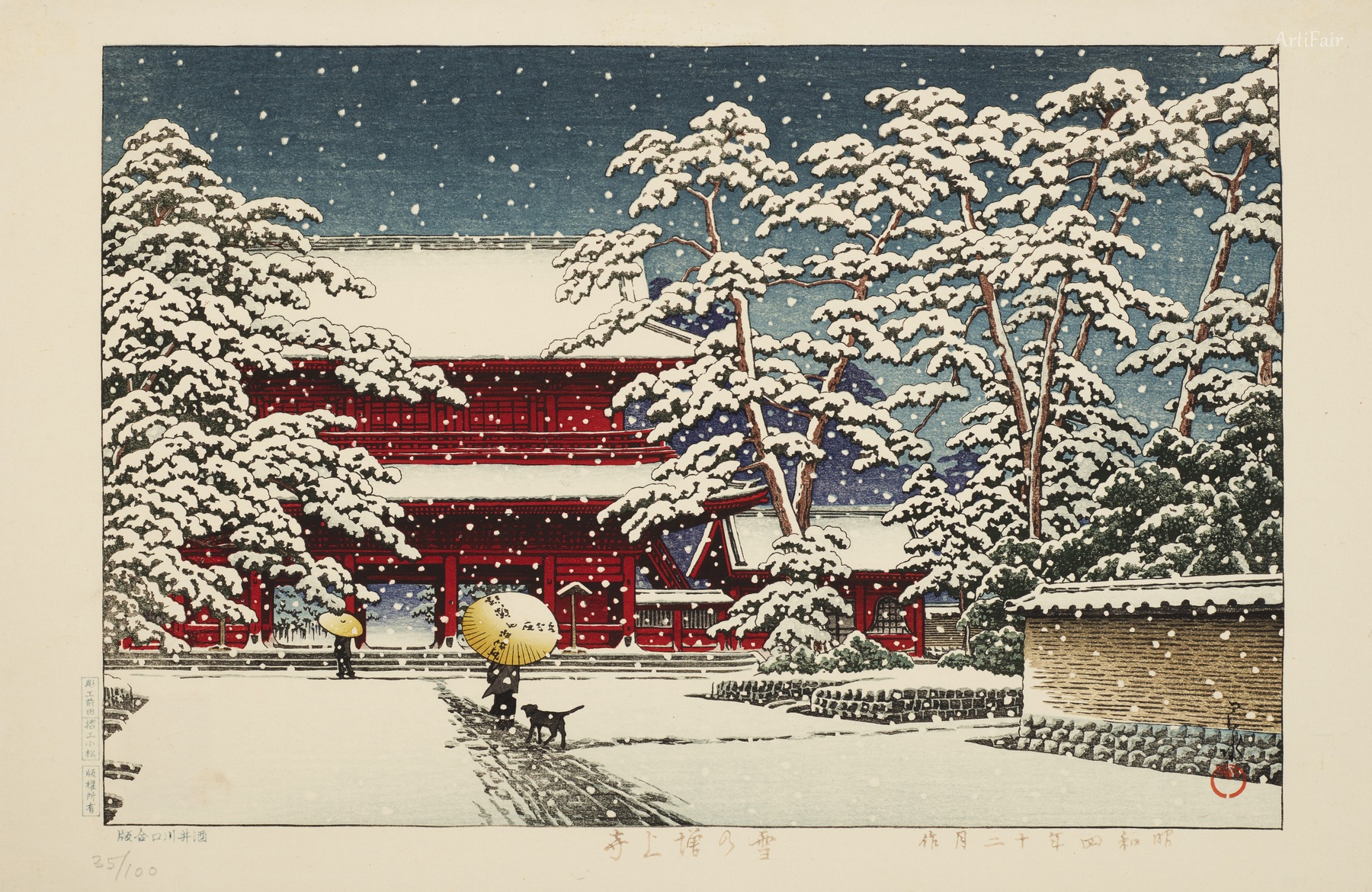
Art Appreciation
This evocative woodblock print captures a quiet winter scene at a temple, where the tranquility of freshly fallen snow blankets the grounds. The composition centers on a bold red temple gate that contrasts vividly with the surrounding whites and deep blues, immediately drawing the eye. Snow-laden trees arch gently overhead, their branches delicately outlined against a twilight sky, enhancing the serene and contemplative mood of the piece. Two figures walk along a path, each sheltering beneath an umbrella, their footprints faintly imprinting the snowy path—a delicate narrative gesture that adds life and movement to the otherwise still setting.
The artist employs traditional ukiyo-e techniques, with fine, crisp lines and expertly layered colors that give depth and texture, especially notable in the nuanced gradations of the sky and the soft snow. The restrained yet harmonious palette emphasizes tranquility and invites the viewer to feel the stillness of a winter evening. Historically, this work reflects the early 20th century revival of Japanese landscape prints, merging classical aesthetics with an introspective modern sensibility. Emotionally, the piece stirs a peaceful reverie—one can almost hear the gentle patter of snowflakes and feel the cold air, transporting the viewer directly into this quiet moment steeped in cultural reverence.